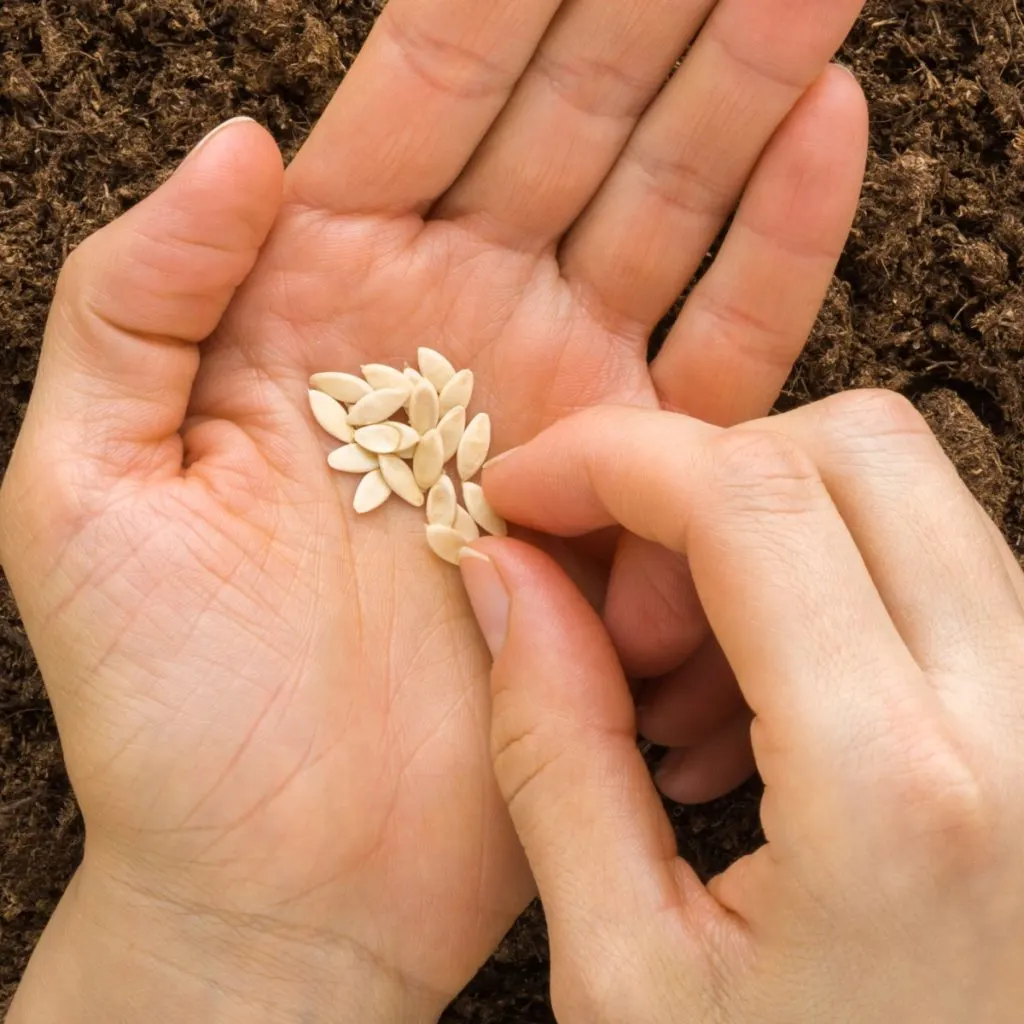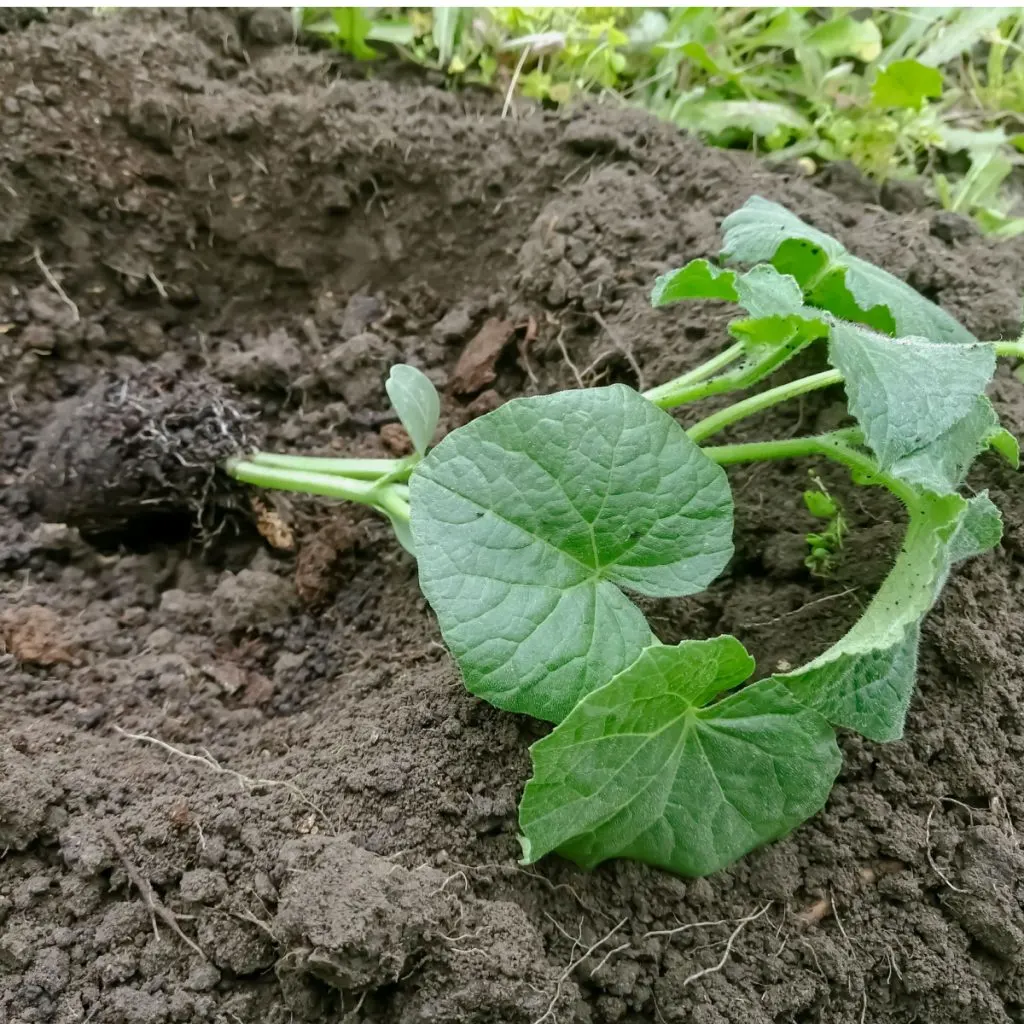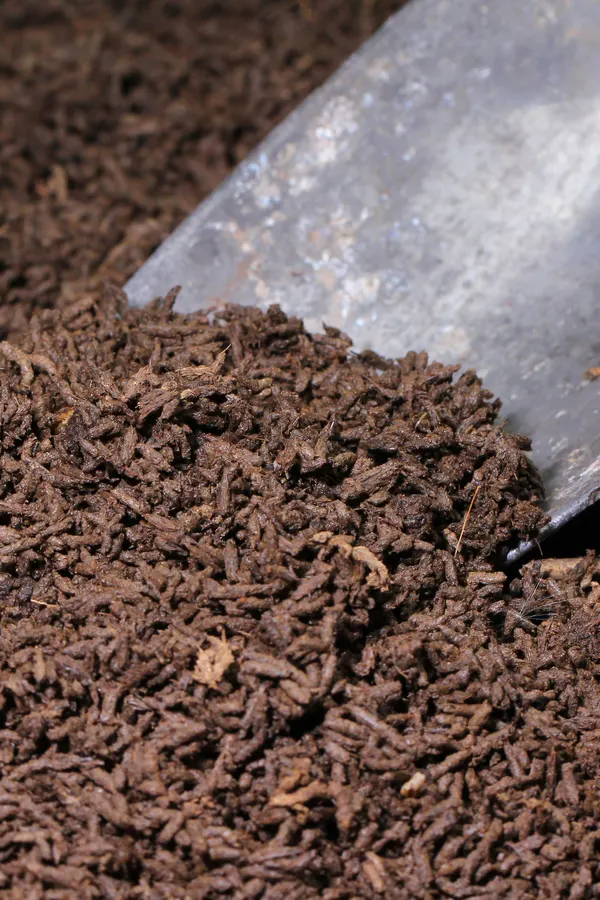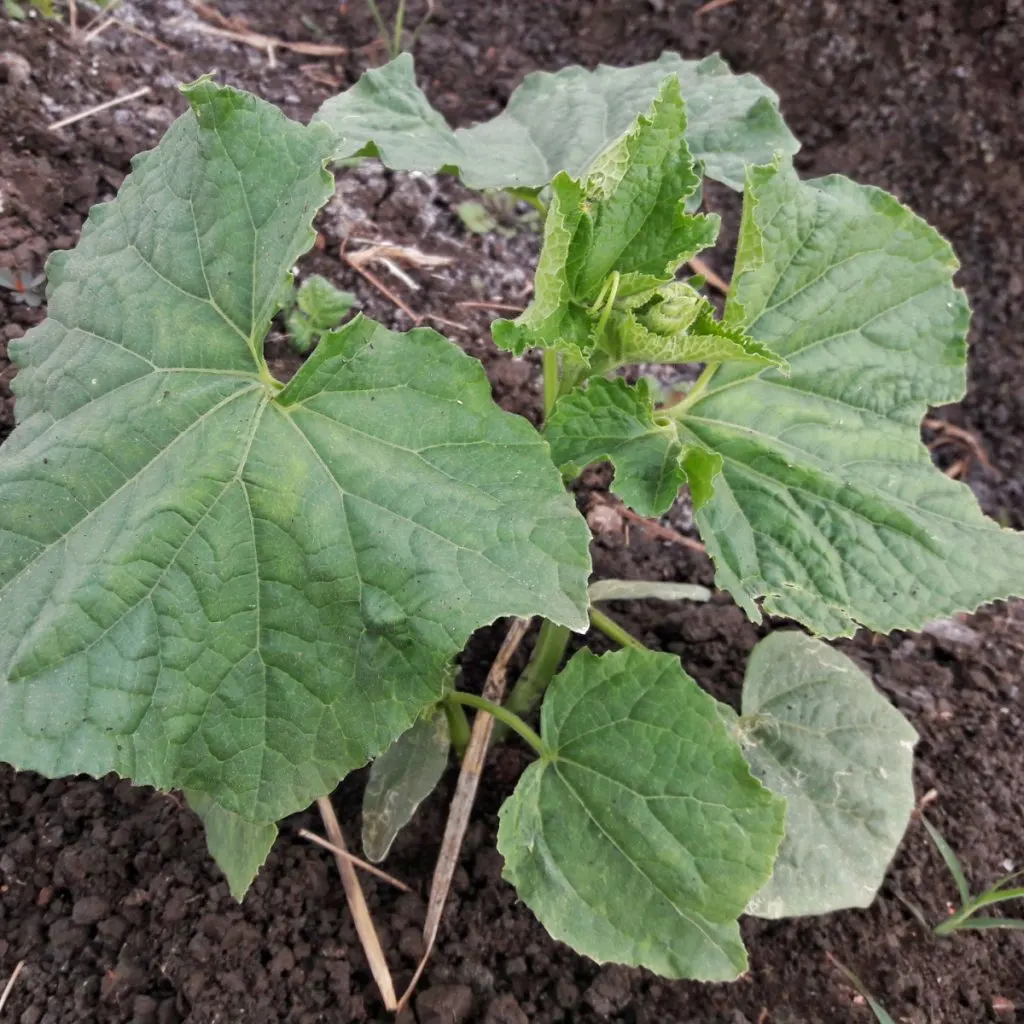If you want to grow the healthiest, most amazing crop of cucumbers you have ever grown – then you need to plant your cucumbers from seed this year – not only is it far easier and cheaper to plant from seed – it also gives you the best chance to grow disease, pest free plants that will produce like never before!
When it comes to planting transplants versus seed in the garden, there are many crops where transplants are the better choice. Two great examples are with tomato and pepper plants. Unfortunately, both can take 90 to 110 days or more to fruit. Because of that, a head start is critical to getting a good harvest.
But when it comes to cucumber plants, that just isn’t the case. Cucumbers actually happen to have some of the quickest seed to fruit times around. In fact, some cucumber plants can go from seed to producing cucumbers in just 50 to 55 days. Even some of the longest varieties still produce at a mere 70 days!

Why is that so important? Because when it comes to cucumbers, they are one vegetable plant that perform far better when directly planted as seeds as opposed to using transplants. And there are a whole slew of reasons why!
The Advantages Of Planting Cucumber Seeds Versus Transplants
For starters, planting cucumbers by seed allows your plants to develop a far stronger root system. One that never has to be interrupted with the stress of transplanting.
When a transplant first goes in the ground, even if weather and soil conditions are ideal, it suffers a bit of shock while it attempts to adjust to the new soil. But in the cool spring when cucumber transplants go in, the weather is often anything but ideal – making that stress far worse on the plants.
This can not only slow or even stop growth temporarily, it also puts the tiny transplants at risk of mold and mildew as they sit in the cool soil unable to grow. And when that happens, pests and other disease then become an easy target for the lethargic plants.
But by planting seed instead of transplants, 99% of those concerns disappear! The seeds sprout in the soil and are naturally more adjusted to its temperature right from the start. And the roots? They grow uninterrupted, never having to be disturbed from transplanting.

The result is a far healthier plant with far less issues. Best of all, because of this, most seed planted cucumbers will grow so well and so fast that they surpass transplants within three to four weeks after planting. And then continue to power past them with even stronger growth and production after that!
How To Plant Cucumber From Seed – The Secrets To Success
Whether planting from seed or transplants, the same sun and soil requirements apply for success with cucumbers. Start by selecting a location that receives early morning sun. This is a big key to long-term success. Cucumbers easily fall victim to mildew, but early sunlight is the solution.
Keeping plant foliage from staying too wet from overnight dew is important to keeping mildew at bay. Early morning sun is the perfect remedy for drying off plants gently. It also helps plants ripen fruits at a faster rate as well later on.
As for soil, cucumbers thrive on rich, fertile, well-draining soil. One of the best ways to provide that is to add in generous amounts of compost to your seed area before planting. Compost is the perfect soil additive for growing healthy cucumber plants. It’s rich, nutrient-filled humus provides a big boost for plants. But it also helps to retain moisture to the roots as well.

Mix in two to three cups of compost to each planting hole. To boost soil fertility and structure even more, add in a 1/4 to a 1/2 cup of worm castings to planting holes as well. Affiliate Product Link: 100% Pure Organic Worm Castings Fertilizer, 15-Pounds
Together, these two organic powerhouses will keep moisture around your seeds to help sprouting – and then provide perfect power for them to take off fast.
Planting For Success – How To Plant Cucumber From Seed & Why It’s The Best Way To Grow!
There are two big final keys to success when planting cucumber seeds. The first is to let the soil warm up before setting the seeds into the soil. And the second is to plant your seeds in small mounds above the surface of the soil when you do.
The biggest mistake gardeners make with cucumbers is to plant too early. That is both with transplants and seeds! It is vital to allow the soil temperature to warm to at least 65° to 70°(F). Anything less, and seeds and plants will sit and rot.

Waiting will not hurt the performance of your plants, it will only help them. The seeds will sprout and grow faster – and be far ahead of any earlier plantings in cold soil in mere weeks.
In addition to allowing that soil to warm, it’s always best to plant cucumbers on a small mound. Planting cucumber plants on a slight slope helps to keep water from standing at the plant’s base. Create mounds with soil a few inches in height, and 12″ to 18″ diameter. (Mixing in compost with soil for the mound is a great idea here too!)
When planting, allow 3′ between mounds for vining varieties, and 18″ between bush style cucumbers. Plant 3 to 4 seeds per mound and thin to the best performing plant a week or so after they sprout. Finally, don’t forget to mulch!
Mulching your cucumber plants is another big key to their success. When you first plant your seeds, place a light coating of straw or shredded leaves over the mounds. This will help to keep moisture in and weeds out. It needs to be light enough (about an inch) to allow seeds to easily pop through.
Listen In To Our Podcast Below On How To Grow Amazing Cucumbers!
But maybe most importantly of all, mulch helps the roots of cucumber plants retain moisture. Moisture that is key to your plants staying productive!
Once the plants pop through, thicken the layer of mulch to two to four inches in depth. Not only does it help keep competing weeds at bay, a few inches of mulch also helps control fluctuations in the soil temperature.
Mulch can also be critical for helping to keep soil borne disease at bay. The protective mulch layer keeps soil from splashing up on leaves when watering and during heavy rainfalls. Soil that can contain mold spores that will damage and even kill plants.
A Few Final Tips – How To Plant Cucumber From Seed
In addition to mulching and keeping plants watered, fertilization is a must early on to boost growth. A low but regular dose of nutrients will get your plants growing fast – and producing even faster! See our article: The Best Way To Fertilize Young Cucumber Plants
Whatever you do, once your cucumber plants start producing, pick often! Cucumber plants need to be harvested on a regular basis to keep plants producing at peak levels.
Plants overloaded with too many cucumbers will begin to stop producing new shoots and bloom. In some cases, it will stop a plant’s production entirely. When a plant becomes overloaded, it begins to convert all of its energy to maturing the crop, and not to producing more flowers. So pick early and pick often!
Here is to planting with seeds and to picking more cucumbers than you ever thought possible this year!
This Is My Garden
Follow Our Facebook Page For Great Gardening Tips And Advice! This Is My Garden Facebook Page
This Is My Garden is a garden website created by gardeners, for gardeners. Jim and Mary Competti have been writing gardening, DIY and recipe articles and books and speaking for over 15 years from their 46 acre Ohio farm. They publish three articles every week, 52 weeks a year. Sign up today to follow via email, or follow along!
